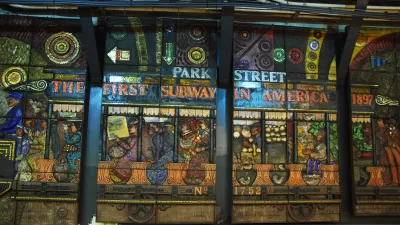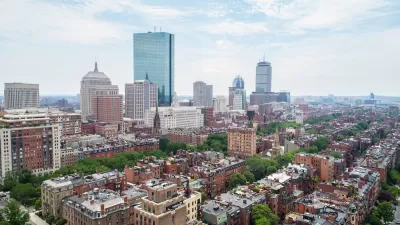A program in Boston to "enliven and strengthen" the arts and creativity in the city's diverse neighborhoods employed artists to seek out and define how people interact with art in their community.

As part of the "Boston Creates" program, undertaken by the city of Boston to enhance and build creative capital, the city partnered with local artists to engage residents in conversation and activities to help identify how these residents interacted with art in their daily lives and what they felt was necessary to strengthen the arts in their communities. E. San San Wong writes on the Barr Foundation's web site about the role of artists in communicating with the public to share and gather information.
During the Summer of 2015, artists fanned out across the city building impromptu galleries and public art pieces and speaking with various groups to understand how the multitude of cultures throughout the city use art as expression.
Artists think creatively about how to solve problems. They can hear and translate multiple voices into action by pushing conversations forward and bringing together people who may not otherwise meet. The Boston Creates artists were the connective tissue between the sometimes jargon-heavy language of urban planning and the personal experiences of residents that makes a cultural plan necessary and immediate.
The information gleaned from the conversations and interactions has been included in the drafting of Boston's new Cultural Plan, which is anticipated to be completed this month.
FULL STORY: When Artists Are at the Intersection of Planning and Community

Pennsylvania Mall Conversion Bill Passes House
If passed, the bill would promote the adaptive reuse of defunct commercial buildings.

Planning for Accessibility: Proximity is More Important than Mobility
Accessibility-based planning minimizes the distance that people must travel to reach desired services and activities. Measured this way, increased density can provide more total benefits than increased speeds.

World's Largest Wildlife Overpass In the Works in Los Angeles County
Caltrans will soon close half of the 101 Freeway in order to continue construction of the Wallis Annenberg Wildlife Crossing near Agoura Hills in Los Angeles County.

Eviction Looms for Low-Income Tenants as Rent Debt Rises
Nonprofit housing operators across the country face almost $10 billion in rent debt.

Brightline West Breaks Ground
The high-speed rail line will link Las Vegas and the Los Angeles area.

Colorado Bans No-Fault Evictions
In most cases, landlords must provide a just cause for evicting tenants.
City of Costa Mesa
Licking County
Barrett Planning Group LLC
HUD's Office of Policy Development and Research
Mpact Transit + Community
HUD's Office of Policy Development and Research
Tufts University, Department of Urban and Environmental Policy & Planning
City of Universal City TX
ULI Northwest Arkansas
Urban Design for Planners 1: Software Tools
This six-course series explores essential urban design concepts using open source software and equips planners with the tools they need to participate fully in the urban design process.
Planning for Universal Design
Learn the tools for implementing Universal Design in planning regulations.


























